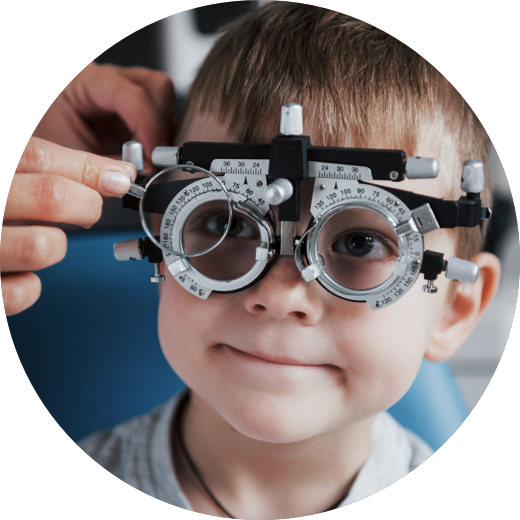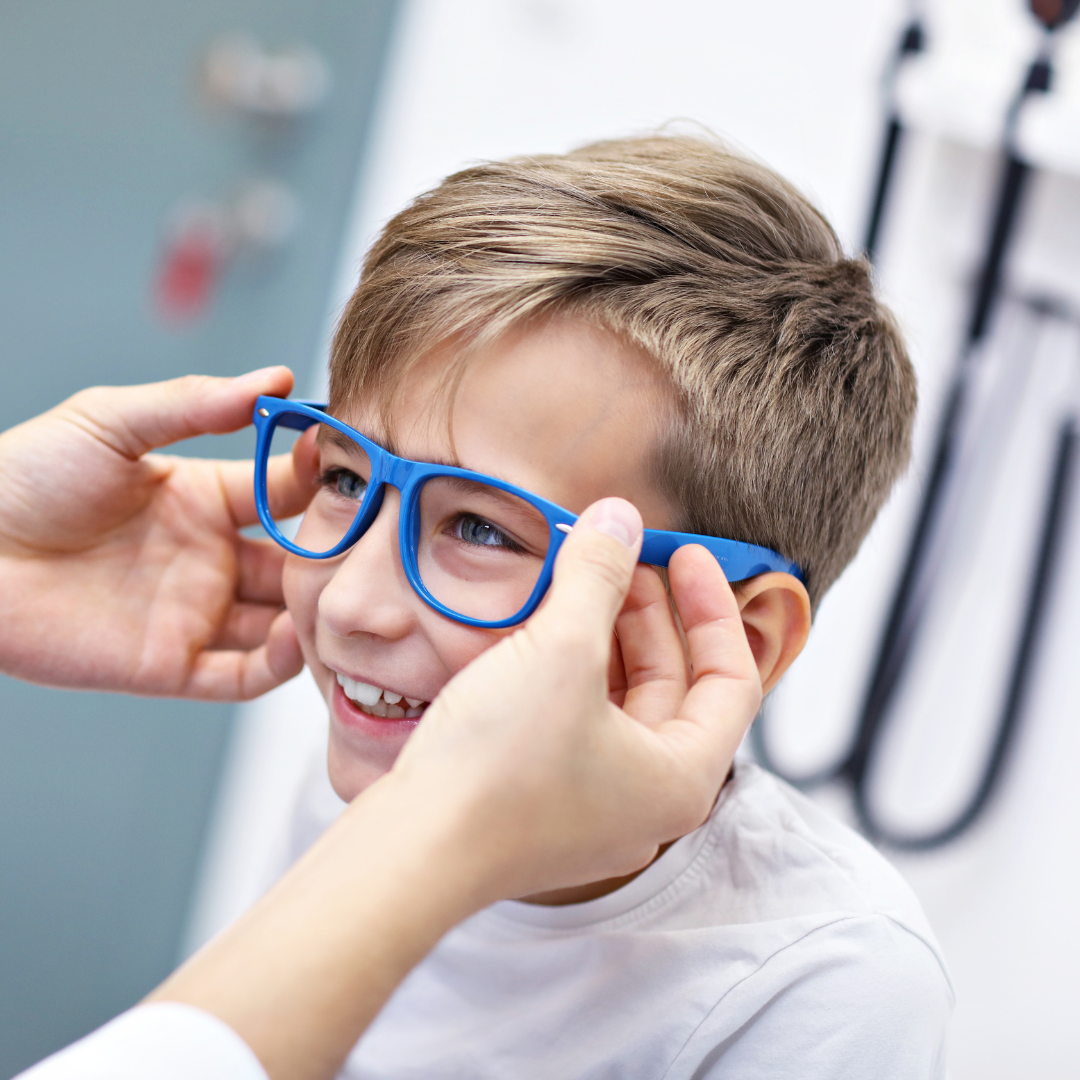What is Short-Sightedness?
Short-sightedness, also known as myopia, is a common eye condition that causes distant objects to appear blurred, while close-up vision remains clear. It occurs when the shape of the eye causes light to focus in front of the retina, rather than directly on it. Myopia typically develops during childhood and can progress with age, particularly during the teenage years.

What Are the Symptoms of Myopia?
The most common symptom of short-sightedness is difficulty seeing things clearly in the distance — such as road signs, classroom whiteboards, or television screens — while near tasks like reading or using a phone remain unaffected.
Other symptoms include:
- Squinting to see clearly
- Headaches caused by eye strain
- Needing to sit closer to the front of a classroom or TV
- Complaints of tired eyes or frequent rubbing of the eyes
If your child is avoiding distance-based tasks or appears to struggle at school, it could be a sign of developing myopia.


Who Is Most Likely to Develop Short-Sightedness?
Myopia can affect people of all ages, but it most often begins in school-aged children, usually between 6 and 13 years old. Several factors can increase the likelihood of developing short-sightedness, including:
- Family history: If one or both parents are myopic, the risk is higher.
- Prolonged near work: Extended time spent reading, using tablets, or doing close-up tasks.
- Limited outdoor time: Studies have shown that children who spend more time outdoors are less likely to become short-sighted.
According to a 2026 study, it’s estimated that by 2050, nearly half of the global population may be affected by myopia — making early detection more important than ever.
Find Out More >
What Causes Myopia?
Short-sightedness is typically caused by the eye growing too long, or the cornea being too curved. These changes mean that light rays entering the eye don’t focus on the retina correctly, leading to blurred distance vision.
The cause of myopia is believed to be a combination of genetics and environmental factors. Children today are spending less time outdoors and more time using screens — both of which are believed to contribute to a rise in myopia diagnoses in the UK and globally.


Can Short-Sightedness Be Treated or Reversed?
While short-sightedness cannot be reversed, it can be effectively managed. Common treatment options include:
- Prescription glasses or contact lenses to improve distance vision.
- Myopia management solutions, like HOYA MiYOSMART lenses or soft daily myopia control contact lenses aim to slow the progression of the condition in children.
The key to successful treatment is early diagnosis. That’s why regular eye exams — especially for children — are so important.

If you or your child is struggling to see clearly at a distance or displaying signs of eye strain, it could be a sign of myopia. Booking an eye test is the first step toward clearer, more comfortable vision — and in children, it can make all the difference to their confidence, learning, and long-term eye health.

Both myself and my husband use this opticians. The staff are very friendly and helpful. Would definitely recommend to anyone.
Carol Thompson
